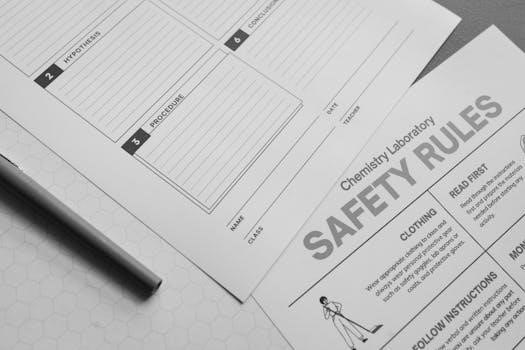moultrie game camera instructions manual
- Published
- in Instructions
Moultrie Game Camera Instructions Manual⁚ A Comprehensive Guide
Embark on your wildlife observation journey with confidence using this comprehensive guide to your Moultrie game camera! This manual serves as your all-in-one resource‚ providing clear‚ step-by-step instructions for setup‚ operation‚ and maintenance. Whether you’re a seasoned hunter or a nature enthusiast‚ this guide will help unlock the full potential of your Moultrie camera.
Moultrie game cameras have revolutionized the way we observe and interact with wildlife. These rugged‚ weather-resistant devices are designed to capture images and videos of animals in their natural habitat‚ providing valuable insights for hunters‚ researchers‚ and nature enthusiasts alike. From scouting locations to monitoring animal behavior‚ Moultrie cameras offer a discreet and effective way to gather information; Moultrie was the first company to introduce a cellular game camera‚ revolutionizing scouting technology.
With a legacy of innovation and a commitment to user-friendly design‚ Moultrie has become a trusted name in the world of trail cameras. Their cameras are known for their ease of use‚ reliable performance‚ and innovative features. Whether you’re tracking deer movement‚ monitoring your property‚ or simply curious about the wildlife in your area‚ a Moultrie game camera can help you capture those exciting moments.
Moultrie offers a wide range of models to suit different needs and budgets. From basic‚ entry-level cameras to advanced cellular models‚ there’s a Moultrie camera for everyone. Understanding the features and capabilities of your specific model is essential for maximizing its performance and capturing the best possible images and videos.
Understanding Your Moultrie Camera Model
Before diving into the setup and operation of your Moultrie game camera‚ it’s crucial to familiarize yourself with the specific features and functionalities of your particular model. Moultrie offers a diverse range of cameras‚ each designed with unique capabilities to cater to various needs and preferences.
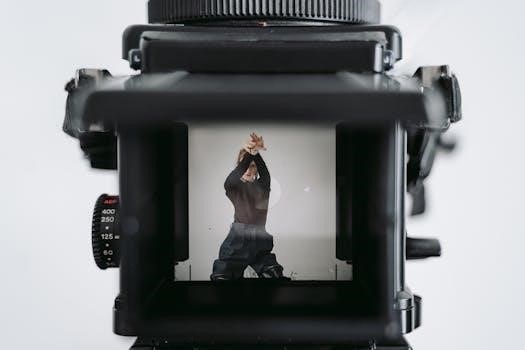
Start by identifying the model number‚ typically found on the camera’s housing or packaging. Once you have the model number‚ consult the user manual for detailed specifications and instructions. The manual will provide valuable information about the camera’s image resolution‚ video recording capabilities‚ trigger speed‚ detection range‚ and other key features.
Pay close attention to the camera’s power requirements‚ including the type and number of batteries needed. Different models may use different battery configurations‚ so it’s important to use the correct type to ensure optimal performance and longevity.
Also‚ familiarize yourself with the camera’s external components‚ such as the lens‚ infrared flash‚ motion sensor‚ and memory card slot. Understanding the location and function of each component will help you operate the camera effectively and troubleshoot any issues that may arise.
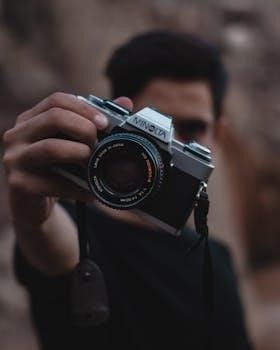
Initial Setup⁚ Batteries and SD Card
The first crucial step in preparing your Moultrie game camera for action is the proper installation of batteries and an SD card. These components are essential for powering the camera and storing the captured images and videos.
Begin by selecting high-quality AA batteries‚ ensuring they are fresh and of the recommended type for your specific camera model. Refer to your camera’s manual for the exact battery specifications. Open the battery compartment and carefully insert the batteries‚ paying close attention to the polarity markings (+ and -) to ensure correct alignment.
Next‚ choose a compatible SD card with sufficient storage capacity for your needs. Moultrie cameras typically support SD cards up to a certain size‚ so consult your manual for the maximum supported capacity. Insert the SD card into the designated slot‚ making sure it clicks into place securely.
Before using the SD card‚ it’s recommended to format it using the camera’s built-in formatting function. This will ensure optimal compatibility and performance. To format the SD card‚ navigate to the camera’s menu and select the “Format SD Card” option. Follow the on-screen prompts to complete the formatting process.
Mounting Your Moultrie Game Camera
Properly mounting your Moultrie game camera is critical for capturing the best possible images and videos. A secure and well-positioned camera will ensure stable footage and optimal coverage of your target area. Several mounting options are available‚ each with its own advantages.
One common method involves using the included strap to attach the camera to a tree or post. Thread the strap through the slots on the back of the camera and securely fasten it around the chosen object. Ensure the camera is level and facing the desired direction. Adjust the strap as needed to achieve the optimal angle.
Another option is to use a mounting bracket or tripod. These accessories provide a more stable and versatile mounting solution. Attach the bracket to the back of the camera and then secure it to a tree‚ post‚ or tripod. This method allows for greater flexibility in camera placement and angle adjustment.
When selecting a mounting location‚ consider factors such as the camera’s detection range‚ the target area‚ and the surrounding environment. Avoid placing the camera in direct sunlight or areas with excessive vegetation‚ as these can interfere with image quality and trigger false detections.
Navigating the Camera’s Menu
Understanding how to navigate your Moultrie game camera’s menu is crucial for customizing its settings and optimizing performance. The menu system allows you to adjust various parameters‚ such as image resolution‚ video length‚ trigger sensitivity‚ and time-lapse intervals. Familiarizing yourself with the menu structure will enable you to tailor the camera to your specific needs and preferences.
Typically‚ accessing the menu involves pressing the “Menu” or “Mode” button on the camera. This will bring up a list of options‚ which you can scroll through using the up and down arrow buttons. Once you’ve selected the desired option‚ press the “OK” or “Enter” button to access its settings.
Within each menu option‚ you can use the arrow buttons to adjust the settings and then press “OK” to save your changes. Be sure to consult your camera’s user manual for detailed explanations of each setting and its impact on performance. Some common menu options include “Image Size‚” “Video Length‚” “Trigger Speed‚” “Detection Range‚” and “Time-Lapse Mode.”
Take some time to explore the menu system and experiment with different settings to find what works best for your specific hunting or wildlife observation needs. With a little practice‚ you’ll become proficient at navigating the menu and customizing your camera’s performance.
Setting the Date and Time
Accurately setting the date and time on your Moultrie game camera is essential for proper image and video organization and analysis. This information is typically displayed on each captured image or video‚ allowing you to track when events occurred and easily sort your files. Incorrect date and time settings can lead to confusion and make it difficult to analyze your data effectively.
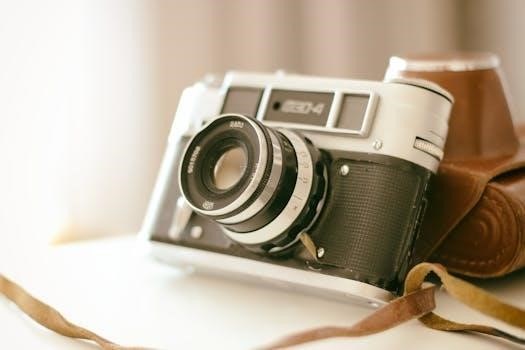
To set the date and time‚ navigate to the “Date/Time” option within the camera’s menu. You will typically be presented with fields for the year‚ month‚ day‚ hour‚ and minute. Use the arrow buttons to adjust each field to the correct value‚ and then press the “OK” or “Enter” button to save your changes.
Some Moultrie cameras may also offer the option to choose between a 12-hour or 24-hour time format. Select the format that you prefer. It’s a good practice to double-check the date and time settings after making changes to ensure that they are accurate.
Consider setting a reminder to periodically check and update the date and time‚ especially after changing the batteries or if the camera has been inactive for an extended period. Keeping the date and time accurate will greatly enhance the organization and analysis of your captured images and videos‚ providing valuable insights into wildlife activity.
Configuring Image and Video Settings
Tailoring the image and video settings on your Moultrie game camera is crucial for capturing the desired quality and type of media. These settings allow you to optimize the camera’s performance for specific environments and monitoring goals. Understanding and adjusting these settings will significantly impact the clarity‚ detail‚ and storage capacity of your captured data.
Within the camera’s menu‚ you’ll find options to adjust image resolution‚ video resolution‚ and the number of photos taken per trigger. Higher image resolutions capture more detail but require more storage space. Video resolution similarly affects quality and file size. The number of photos per trigger determines how many images are captured each time the camera detects motion‚ offering varying levels of detail for each event.
Consider the lighting conditions of your monitoring area. For areas with low light‚ you may want to increase the image resolution or enable infrared flash settings to enhance visibility. In well-lit areas‚ lower resolutions may suffice‚ conserving storage space.
Experiment with different settings to find the optimal balance between image/video quality and storage capacity. Regularly review your captured media to assess the effectiveness of your settings and make adjustments as needed. Properly configured image and video settings will ensure you gather valuable data tailored to your specific monitoring needs.
Understanding Trigger Speed and Detection Range
Trigger speed and detection range are two critical specifications that significantly impact the performance of your Moultrie game camera. Understanding how these features work and how to optimize them for your specific needs is essential for capturing the desired images and videos.
Trigger speed refers to the time it takes for the camera to capture an image or begin recording video after motion is detected. A faster trigger speed ensures that you capture subjects as they enter the camera’s field of view‚ minimizing the chance of missing crucial moments. Slower trigger speeds may result in capturing only the tail end of an event as the subject moves out of range.
Detection range‚ on the other hand‚ describes the distance at which the camera can detect motion. A longer detection range allows you to monitor a wider area‚ but it may also increase the number of false triggers caused by movement outside the area of interest. A shorter detection range reduces false triggers but limits the area being monitored.
Several factors can affect trigger speed and detection range‚ including ambient temperature‚ the size and speed of the subject‚ and the camera’s settings. Experiment with different settings and placement to find the optimal balance between these two features for your specific monitoring needs. Consider the environment and the typical behavior of the subjects you are monitoring when making adjustments.
Using the Test Mode
The test mode on your Moultrie game camera is an invaluable tool for ensuring proper setup and functionality before deploying it in the field. This mode allows you to simulate real-world conditions and verify that the camera is capturing images or videos as expected‚ without wasting battery life or SD card space.
Activating the test mode typically involves navigating to a specific menu option within the camera’s settings. Once activated‚ the camera will enter a state where it is highly sensitive to motion‚ allowing you to easily trigger it by walking in front of the lens. After triggering‚ the camera will quickly capture an image or video‚ which you can then review on the camera’s screen to assess image quality‚ framing‚ and detection range.
Using the test mode‚ you can fine-tune the camera’s position‚ angle‚ and settings to achieve the desired results. You can experiment with different sensitivity levels‚ detection zones‚ and trigger delays to optimize the camera’s performance for your specific monitoring needs. It’s also a great way to confirm that the date and time are set correctly‚ ensuring accurate timestamps on your captured media.
Remember to deactivate the test mode before leaving the camera unattended‚ as prolonged use in this mode can drain the battery. By thoroughly testing your camera before deployment‚ you can avoid common issues and maximize your chances of capturing valuable data.
Troubleshooting Common Issues
Even with careful setup‚ you may encounter occasional issues with your Moultrie game camera. This section addresses some common problems and provides troubleshooting steps to help you resolve them quickly and efficiently.
Camera Not Powering On⁚ First‚ ensure that the batteries are fresh‚ correctly installed with the proper polarity‚ and of the recommended type. Low battery power is a frequent culprit. Next‚ check for any corrosion or damage to the battery contacts. If the camera still doesn’t power on‚ try a different set of batteries from a different manufacturer.
No Images or Videos Captured⁚ Verify that an SD card is inserted and properly formatted. The camera’s menu usually has a format option. Also‚ ensure that the camera is not set to “off” or “test” mode. Check the sensitivity settings to ensure they’re appropriate for the environment. Obstructions in front of the lens can also prevent triggering.
Poor Image Quality⁚ Clean the lens with a soft‚ lint-free cloth. Ensure that the camera is positioned away from direct sunlight or other sources of glare. Adjust image resolution settings within the camera’s menu. Consider the ambient lighting conditions; night images may require adjusting the IR flash intensity.
Incorrect Date/Time Stamps⁚ Double-check the date and time settings in the camera’s menu and correct if necessary. Batteries dying can reset this.
If these steps don’t resolve the issue‚ consult the Moultrie website for additional support resources or contact their customer service team.
Moultrie Mobile Setup and Activation
Unlocking the remote monitoring capabilities of your Moultrie game camera through Moultrie Mobile requires a straightforward setup process. This section guides you through activating your camera and connecting it to the Moultrie Mobile network.
Account Creation⁚ Begin by creating a Moultrie Mobile account through the Moultrie Mobile website or the dedicated mobile app. You’ll need to provide your contact information and choose a subscription plan that suits your needs. Consider the number of images you anticipate capturing and the desired frequency of image uploads when selecting a plan.
Camera Activation⁚ Locate the camera’s serial number and activation code‚ typically found inside the battery compartment or on the camera’s packaging. Enter these details into your Moultrie Mobile account. The system will then associate your camera with your account.
Network Configuration⁚ Ensure your camera has adequate cellular service by checking signal strength in the camera’s intended location. Insert a compatible SD card and power on the camera. The camera will automatically attempt to connect to the Moultrie Mobile network.
Testing Connection⁚ After activation‚ perform a test image upload through the Moultrie Mobile platform to verify that the camera is successfully transmitting images. You’re now ready to receive images remotely!
Downloading and Viewing Images/Videos
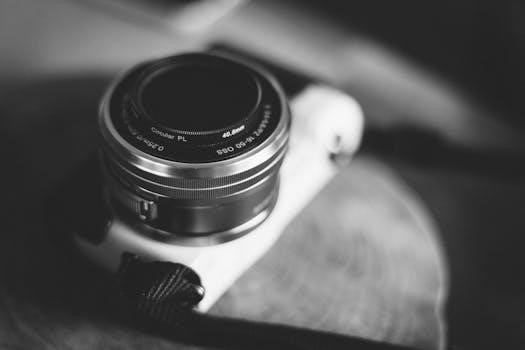
After your Moultrie game camera has diligently captured images and videos‚ accessing and reviewing this data is essential. Depending on your camera model and setup‚ you have several options for retrieving your media.
Direct SD Card Access⁚ The most common method involves physically removing the SD card from the camera and inserting it into a computer or card reader. Once connected‚ the SD card will appear as a removable drive‚ allowing you to browse the folders and copy the desired images and videos to your computer.
USB Connection⁚ Some Moultrie camera models support direct USB connection to a computer. Connect the camera using a USB cable‚ and it should be recognized as a removable storage device‚ granting access to the SD card’s contents.
Moultrie Mobile App⁚ If you’re using a Moultrie Mobile camera‚ images and videos are automatically uploaded to your Moultrie Mobile account. You can then access and download these files through the Moultrie Mobile app on your smartphone or tablet.
Viewing and Managing Files⁚ Once downloaded‚ you can use standard image and video viewing software on your computer or mobile device to review your captured media. Organize your files into folders for easy access and consider using photo editing software for enhancements.
Maintenance and Care for Longevity
To ensure your Moultrie game camera continues to perform reliably and capture valuable data for years to come‚ regular maintenance and proper care are crucial. Protecting your investment involves several key practices that safeguard against environmental damage and internal wear.
Regular Cleaning⁚ Periodically clean the exterior of your camera with a soft‚ damp cloth to remove dirt‚ dust‚ and debris. Pay special attention to the lens cover‚ ensuring it is free from smudges and scratches that could affect image quality.
Battery Management⁚ Use high-quality batteries and replace them regularly‚ even if they still appear to have some charge. Leaking batteries can cause significant damage to the camera’s internal components. Remove batteries when storing the camera for extended periods.
SD Card Care⁚ Use a reliable SD card and format it regularly to maintain optimal performance. Avoid removing the SD card while the camera is powered on or actively recording‚ as this can corrupt the data.
Weather Protection⁚ While Moultrie cameras are designed to withstand outdoor conditions‚ consider using a protective housing or shield to further safeguard against rain‚ snow‚ and extreme temperatures. Inspect the camera’s seals and gaskets regularly to ensure they are intact and providing adequate protection.
